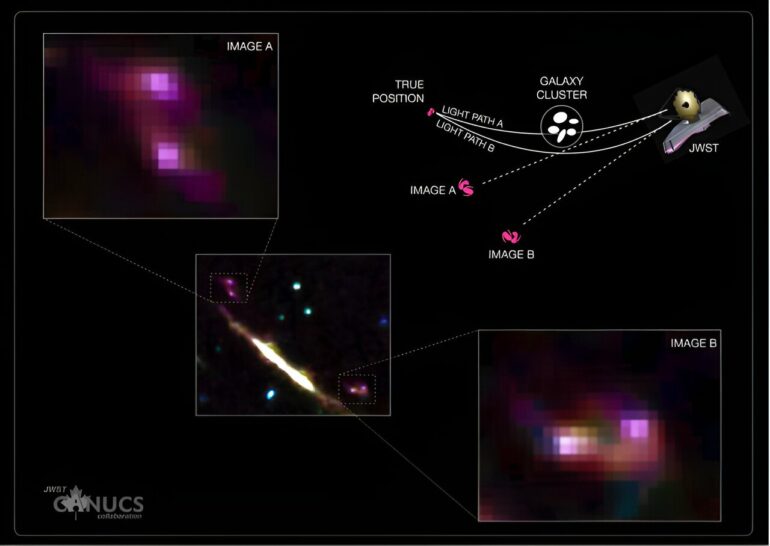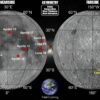Scientists have theorized how galaxies evolve, but details in their early phase of formation remained shrouded in celestial clouds of mystery.
An international team, including Kyoto University and Saint Mary’s University, has now discovered a baby galaxy made possible through the lens of the James Webb Space Telescope or JWST.
This baby galaxy shows evidence that its intensive growth is the result of a merging event of two smaller galaxies assembled early in the history of our universe.
These two smaller galaxies, dubbed as ELG1 and ELG2, can also be seen in the JWST images, helping the team better understand how galaxies form.
“Because of Einstein’s gravitational lensing or warping effect applied through the JWST, we can see the galaxy twice, like a desert mirage, because light reaches us from two slightly different directions,” says Marcin Sawicki at Saint Mary’s University in Nova Scotia.
“From studying the newly born galaxy, we learned that when smaller sub-components, such as the ELG1 and ELG2, collide and merge, galaxies can undergo intense growth spurts of star formation,” explains Kyoto U’s lead author Yoshi Asada.
The JWST data, obtained by the international team, revealed two images of the merging galaxies, produced by the bending of light around the mass concentration of the galaxy cluster MACS 0417 that lies between the observers and the merging galaxy pair.
Evidence of the formation of hot young stars within the young galaxies is the glow caught in the images caused by the ionized hydrogen gas.
Asada has worked on JWST data with other astronomy scientists in Canada, including Professor Sawicki. Both are members of the Canadian NIRISS Unbiased Cluster Survey, or CANUCS collaboration, which studies the evolution of galaxies.
Citation:
Growth of ‘baby galaxies’ witnessed with James Webb Space Telescope (2023, September 28)



